Contents
If you ask children about the beneficial properties of cauliflower, they will not name them. Most likely, they will say that this is the most tasteless vegetable. However, it is rich in vitamins and minerals. That is why many gardeners grow this vegetable on their plots.
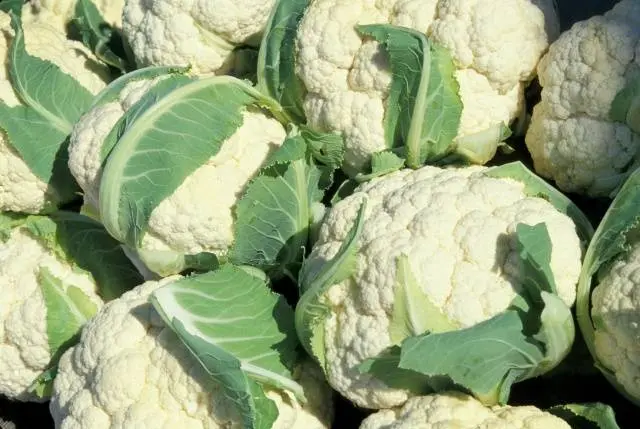
Cauliflower has a ripening period. If you want to grow a vegetable of normal size and flavor that will keep for a long time, then you should take into account the factor of its ripening. It largely depends on the planted variety. This article will show you when to cut cauliflower and how to do it the right way. Also, at the end of the article, a video will be posted from which you will learn about the features of growing this vegetable that is useful for the human body.
Frost. Can they damage crops
Cabbage is a thermophilic crop. Therefore, the question of whether she is afraid of frost is quite relevant. When the temperature drops below +8℃, spare shoots begin to form at the base of the vegetable, which look like small heads. At this point, the growth of the main inflorescence stops.

If you encounter such a difficulty, then you can save the heads by collecting them and leaving them to ripen indoors. However, if you have a greenhouse in which you can maintain a stable temperature, namely + 10 ℃, then your crop will not freeze and will ripen in the beds.
How to determine the time of harvesting cabbage
If during the warm season you have provided proper care for cauliflower, then in the end you will receive a well-deserved reward in the form of dense snow-white, emerald, purple or orange inflorescences. Harvesting cauliflower depends on the planted crop variety:
- Early varieties form inflorescences 2-3 months after the appearance of the first sprouts. Harvesting takes place at the end of June – beginning of July.
- Medium-ripening varieties have a longer growing season, ranging from 100 to 130 days. Harvest takes place at the end of July – beginning of August.
- Late cabbage brings the harvest in late August or September. Such varieties have a long growing season – 5 months or more. But they are the ones that last the longest.
The influence of weather conditions on ripening
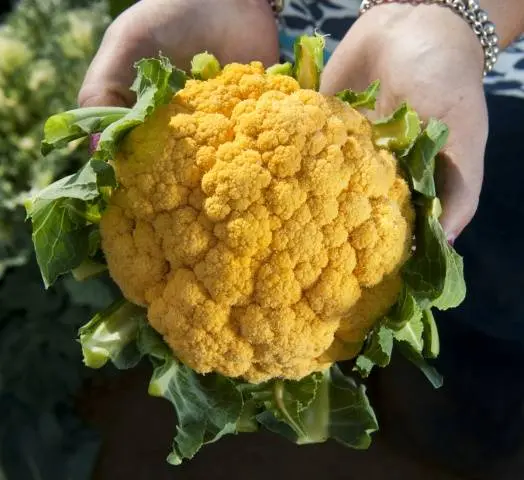
It’s no secret that weather conditions affect the ripening period of inflorescences. It is important to take into account the factors that affect the growing season:
- Optimal temperature, contributing to the ripening of cauliflower – from +15 to +20℃. At temperatures below +15℃, the growth of the culture slows down, and at temperatures above +20℃, defective inflorescences are formed, they will be loose and small.
- Light level is also important for the full growth and development of inflorescences. When there is a lot of sunlight, inflorescences form too quickly and become prone to overgrowth. With a long light day, only the formed heads need to be shaded.
- Lack of moisture also affects the period of growth and ripening of cauliflower. The heads will be small and not tight enough.
- soil fertility, perhaps, has a key role in the intensity of growth and fruiting of the crop. On unfertilized land, the culture grows slowly, and the resulting inflorescences are susceptible to decay.
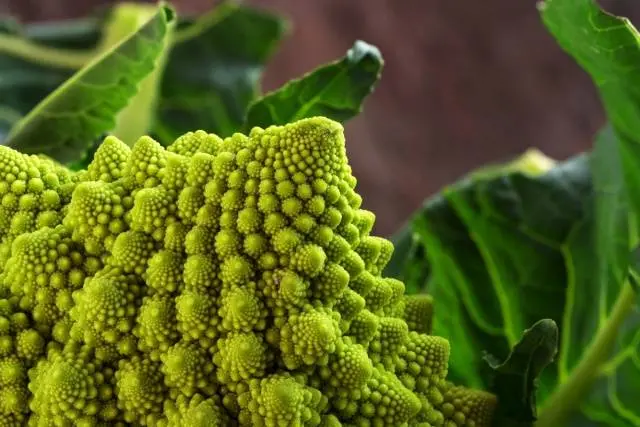
Therefore, it is important to focus not only on the approximate dates when cabbage can be harvested, but also to look at the state of the inflorescences.
What weather to harvest
Cauliflower should be harvested in dry and cloudless weather. You can start cutting heads at lunchtime, but no longer than before seven in the evening. You can not clean them after the rain. The harvested crop will not have the taste and aroma inherent in cabbage, and it will not be stored either. This is due to the fact that the plant needs moisture and heat only in the phase of active growth.

How to properly cut cauliflower
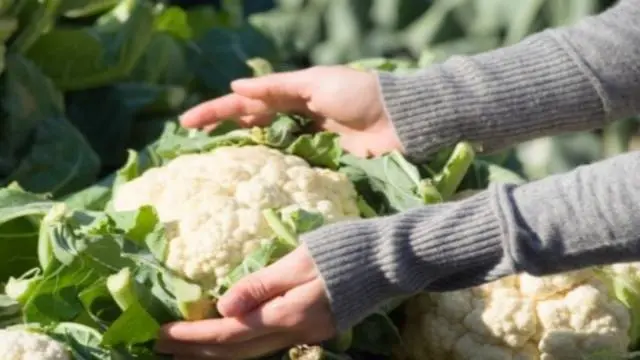
The cabbage crop should be harvested not only at the appointed time, but also competently. Only if all the rules are observed, one can expect a good preservation of the heads. So, there are several rules for harvesting cauliflower:
- The inflorescence is considered ripe if it reaches 10 – 12 cm in radius. Larger heads are often unsuitable for cooking as they lose their color and structure.
- The mature head should be removed from the plant immediately. This implies that the crop should be harvested gradually, checking the maturity of the heads every 2-3 days. If you cannot harvest gradually, then cover the ripened heads with something to protect them from sunlight.
- Cut off the cabbage inflorescences with a sharp, pre-sharpened knife. In this case, the inflorescences should be cut with a few lower leaves. To keep the heads longer, they can be removed from the ground completely, with the root system.
- The harvest must be transferred to storage, which should be cool and dark. If you leave cut cauliflower in the sun, it will quickly lose its nutritional value and wither.
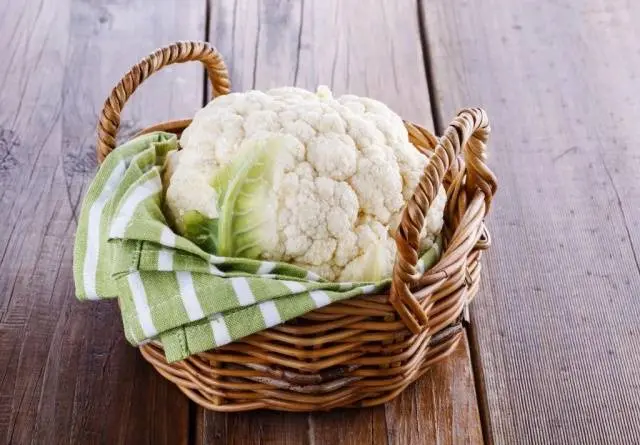
So, if you follow the rules for cutting inflorescences, you can save them by gradually preparing tasty and healthy dishes for your household from this vegetable rich in vitamins and microelements, which has a beneficial effect on the digestive tract.
Features of storage
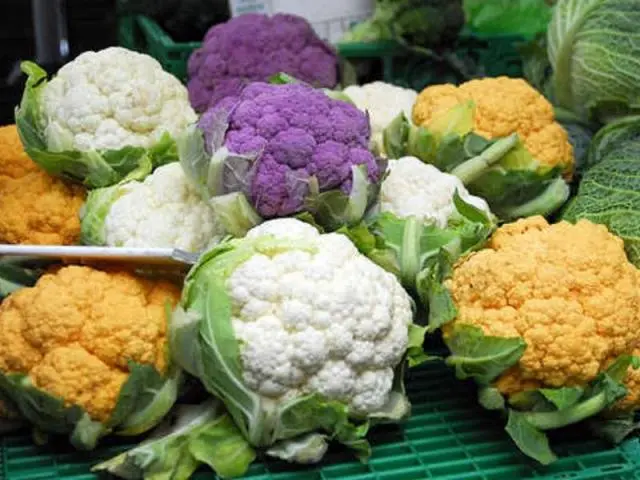
If you have planted a lot of flowery vegetables and harvested a rich harvest, then the next equally important task is to keep the harvest until the summer. And here, too, you need to follow some rules so that the cut inflorescences do not fade and, even worse, do not rot:
- Overripe cabbage does not store well. In view of this, it is important to prevent overripe vegetables.
- The inflorescence should have four leaves after cutting.
- Do not leave cut heads in the open sun.

You can store cauliflower inflorescences in several ways:
- Unripe inflorescences grow. How? Before digging with root and earth, they need to be watered abundantly for 2 days. Then the plants are stacked tightly to each other and covered with earth to the leaves. However, it is important that at the same time there is no access to daylight in the room. The air temperature should vary within +4+10℃. So, the heads can be stored for up to 4 months, and in this way they not only grow inflorescences, but also simply store mature heads. It is also important here that the room has good ventilation and high humidity in the range of 90-95%.
- At zero temperature and high humidity, cauliflower can be stored for up to 7 weeks. It is placed in boxes or boxes and covered with a film on top. From time to time you need to check the inflorescences, as some may begin to rot. Spoiled heads should be immediately removed from healthy ones, otherwise they will all become infected and become unusable.
- Under the same climatic conditions, you can store cabbage for up to 21 days, hanging it by the stumps. But this is only acceptable if you have few inflorescences and during this time you use them.
- To store cauliflower in the refrigerator, wrap each floret in a separate bag or newspaper. The contact of the inflorescences will accelerate the process of their decay, so they need to be packed separately.
- If you are going to store cauliflower in the freezer, then you must first rinse it and disassemble the heads into inflorescences, which are then divided into portions, packed in bags and sent to the freezer. Cauliflower can be stored this way for up to 12 months. However, re-freezing the vegetable and temperature fluctuations in the freezer will lead to damage to the vegetable, so you need to pack it strictly for one serving, which you can use. In this case, the same temperature must be maintained in the freezer.
So, if you have a lot of heads, then some of them can be sent to the basement, where they will last up to 4 months, and some can be placed in the freezer, which will allow you to keep the flowery vegetable until the next harvest. When frozen, the vegetable will retain all the beneficial substances. In addition, the taste characteristics of the product will not be affected, and its natural aroma will be preserved.

Today, thanks to the painstaking work of breeders, you can grow a variety of varieties and hybrids of a flowery vegetable in your garden. For example, the Cheddar F1 hybrid has orange heads, and the Lilac Ball variety has purple inflorescences. The Amphora variety has an unusual inflorescence shape, resembling a starfish in appearance. The original external features of the vegetable and the variety of colors make it possible to decorate the table with delicious dishes prepared from different colors of this flowery vegetable.
So, from this article, you learned not only how to harvest cauliflower, but also what affects the ripening period of the heads, and what weather is best to harvest. In addition, we bring to your attention a video that will help you understand how to properly care for cauliflower in order to eventually get a good and high-quality crop of a flowery vegetable:









